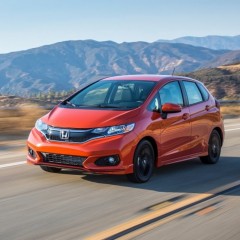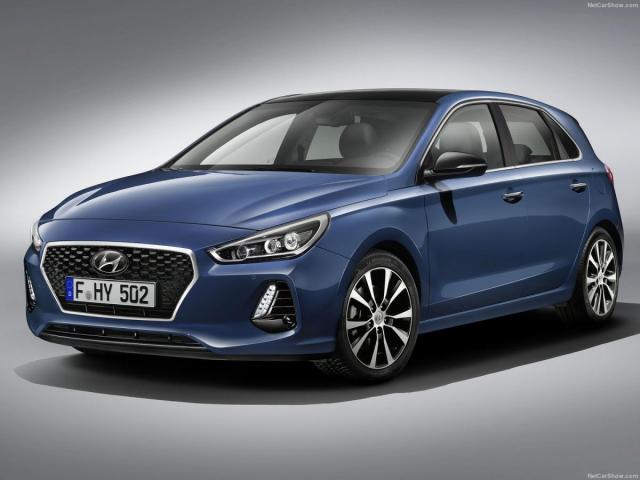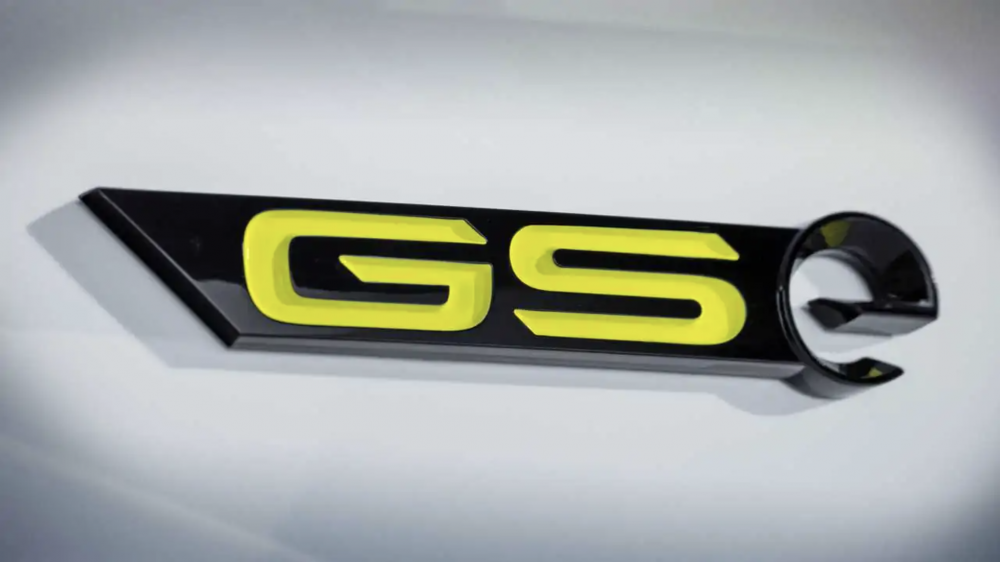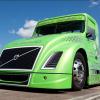Search the Community
Showing results for 'opel' in topics.
-
Opel Singapore has just launched the new Crossland X. Launch Price at SGD102,888. Probably replacing the Mokka X. http://www.opel.com.sg/vehicles/opel-range/cars/crossland-x/index.html?gclid=CjwKCAjw6ZLOBRALEiwAxzyCW1ILCXQTrvI_kHyJxhRfIt6y_wjbCpR6qwbymj0Xb-sgO2ZzG9zHMBoC438QAvD_BwE https://www.carzone.ie/reviews/new-car-reviews/Opel/Crossland-X/2017/548/ Farewell to Opel ’s family favourite, the Meriva, and hello to the car that replaces it for 2017, the Crossland X . The new Crossland X takes aim at popular cars like the Nissan Juke and Renault's Captur, and it blends downscaled SUV looks with impressive levels of interior space. It’s also the first Opel to be built under the German manufacturer’s merge with Peugeot PSA, so it is based on the same platform as the latest Peugeot 2008. We recently took the Crossland X for a week-long test drive on Irish roads to see if has the recipe for success in an increasingly competitive corner of the market. The Crossland X shares many styling similarities the popular Opel Mokka X SUV, although it isn’t as rugged from the outside. Features like the front grille and rear lights are recognisable from other cars in Opel ’s range, while its raised ride height and tall bumpers lend it an SUV stance. Choice of specification in Ireland consists of two models, SC and SE, while the base specification SC gets 16-inch alloy wheels and distinctive LED daytime running lights as standard. Our test car is a higher specification SE model, so it gains larger 17-inch alloy wheels and dark tinted windows. The Crossland X is more spacious inside than you would expect, with excellent head and leg room for front and rear seat passengers. Space in the rear is particularly impressive due to the flat floor, and boot space is respectable at 410 litres, trump rivals like the Nissan Juke. There is also an optional versatility pack which allows the rear seat bench to slide forwards and backwards and further increases boot space. The driving position is high which means it offers a commanding view of the road, and there’s enough support from the seats for comfort during longer drives. The quality of the plastics throughout the cabin is mostly good, but they are scratchy in certain areas such as beneath the steering wheel and lower doors. It’s nice to note that all Crossland X models have a user-friendly 7-inch colour touchscreen system in the centre of the dashboard as standard, incorporating Opel ’s Intellilink system, Apple CarPlay and Android Auto. Also included is Opel ’s OnStar with a Wi-Fi hotspot, roadside assistance call out and lots of other features too, so it's fair to say that the Crossland X is more connected and smartphone-friendly than many of its rivals. The Crossland X is available with either a 1.2-litre petrol engine available in two different states of tune (81hp or 110hp), or a larger 1.6-litre CDTi diesel engine in 99hp or 120hp variants. We drove the 120hp 1.6 CDTi diesel with a six-speed-manual gearbox and it offers an ideal mix of performance and economy. 0-100km/h is possible in under ten seconds and it cruises confidently at motorway speeds, while we covered over 600 kilometres of driving in the midlands and managed 5-litres per 100 kilometres of driving in fuel economy (56MPG). The Crossland X has an accommodating suspension setup which means it is comfortable out on the road, but it isn’t very agile through corners. Light steering helps during parking, but again, there is little feedback from the steering when cornering. This is unlikely to affect family buyers who will value comfort over driving dynamics. Despite its SUV looks, the Crossland X isn’t available with four-wheel-drive, but the front-wheel-drive setup offers sufficial amounts of grip. Family buyers will appreciate standard safety features such as lane departure warning, traffic sign recognition, rear parking sensors and hill start assist. Our test car has desirable optional extras such as a panoramic sunroof, front parking sensors and Opel ’s lighting pack, but the asking price is bumped up accordingly and it can get expensive quickly. The Crossland X is a worthy successor to the Opel Meriva MPV, bringing more style and desirability than its predecessor. Family buyers will appreciate the Crossland’s generous interior space, along with the strong serving of standard equipment. That said, it feels and looks very similar to the latest Opel Mokka X, so differentiating between the two models can be confusing, and it also isn’t as fun to drive as some of its more-established rivals, such as the Peugeot 2008. Taking all things into account, the Crossland X makes for a well-priced alternative to cars like the Nissan Juke with best-in-class space and practicality.
- 86 replies
-
- 2
-

-
I would like to compare the abovementioned models. 1) Pricing 2) FC 3) Handling 4) Size 5) Appearance 6) Maintenance Cost like spare parts. I like both the car design especially Opel Astra 1.6 Twinport. Was considering of Toyota Altis and my friend strongly reccomend on Ford Focus in terms of handling. The pricing is higher than Altis if I'm not wrong. But how much higher? Astra got all the cost rebate, free insurance, etc. So in the end not sure of the selling price. Too confused. Can anyone enlightened me on the pricing as well as commend on the cars. Thks alot.
-
Another new Paris Motor Show launch from Hyundai-Kia, this time the 3rd-generation Hyundai i30. Like the Kia Rio, the 2nd-generation i30 was only sold locally for a few months before Komoco pulled the plug and brought in the Accent instead, which I think is a pity. The interior looks particularly pleasing, taking cues from their Ioniq hybrid. Hope this gets brought in to compete with VW Golf and Opel's latest Astra. Source: https://www.netcarshow.com/hyundai/2017-i30/ Launched in Korea as well, engine choices includes 140PS 1.4-litre GDI Turbo, 204PS 1.6-litre GDI Turbo and 136PS 1.6-litre diesel. http://www.hyundai.com/kr/showroom.do?carCd1=RD008
- 1,804 replies
-
- 3
-

-
Is it just me, but the front look like borrowed from an Opel SUV... BMW will kick off a new chapter of its electrification strategy in 2025 with the launch of a new platform for electric vehicles. The Neue Klasse (New Class) architecture will underpin at least six new zero-emissions SUVs and today, these spy photos provide an early look at one of those electric models in prototype form. Our spies in Germany sent us a batch of spy shots with what is currently known as the NA5 project, which is expected to arrive in the summer of 2025. The high-riding EV here is believed to be roughly the same size as today’s X3. However, smarter packaging combined with longer overhangs should result in a bigger storage area behind the rear seats, as well as a roomier cabin. In August last year, BMW confirmed the first product to be based on the Neue Klasse platform will be an electric sedan. It will be followed by this SUV here and some sources even claim it will arrive first. We won’t speculate on that topic but we’ll mention production of the electric family hauler is expected to begin in July 2025 in Hungary. “By the end of the decade, the Neue Klasse is expected to account for more than half of our sales,” BMW’s CEO Oliver Zipse said last year.
-
Source: https://mothership.sg/2022/09/bluesg-electric-opel/ BlueSG is launching 500 electric Opel Corsa-e hatchbacks gradually from October 2022, The Straits Times reported. The cost of the new cars was estimated to be about S$80 million, or S$160,000 for each car, at prevailing COE (certificate of entitlement) prices. BlueSG will have more than 1,000 cars on road A BlueSG spokesperson told ST that "200 or so" new Opel cars are on the way. If it goes according to plan, BlueSG, an exclusively electric car-sharing firm here, will have a fleet of about 1,000 cars in total before 2022 is over.There are some 800 two-door compact BlueCars on the roads in Singapore. BlueSG had some 650 cars plying the roads in Singapore in February 2021, and ST reported 250 more cars were gradually introduced subsequently. BlueCars are made in Italy. The Opel Corsa-e is Spanish-made. It has four doors. Acquired about a year ago In October 2021, home-grown engineering group Goldbell completed its acquisition of BlueSG from French transportation giant Bollore Group. The new Opel Corsa-e cars are being introduced almost a year after the acquisition. BlueSG is a loss-making business, ST reported. But Goldbell had said it would invest S$70 million up to 2026 to turn things around. Rental rates for the new cars, with more advanced features, are expected to be higher. Top photos via BlueSG
-

Comparing Opel Astra 1.6 Twinport and Ford Focus 1.6 H/B
Viktor12487 replied to Deathsythe's topic in Conti Talk
When discussing cars overall, I would assert that the Opel Astra is a better choice. It is more reliable, even though it may offer slightly less comfort compared to the Ford Focus. However, it's worth noting that the 1.6 Astra engine is not as reliable and tends to have numerous faults. From a reliability standpoint, the 1.6 Ford engine is undoubtedly superior. You can read a bit more about the opel 1.6 engine faults by the link - https://auto-info.tech/en/engines/opel/engine/z16xep -
Thinking of buying one. Any Opel owners car to share if there are serious reliability issues (e.g. like VW a few years back)? Also heard the depre is super bad? Other than that they seem more comfortable than similarly priced Japanese cars, hence considering. Do share your thoughts and experiences!
-
@Rickster obscure brand like Opel/Seat/Peugot profit margin very low also. Long time ago, Opel was so desperate wana sell me their Insignia for like 5-10k profit only whahaha
-

Daihatsu admit tampering with safety tests for 30 years
D3badge replied to Thaiyotakamli's topic in Japanese Talk
I remembered in 1997 ROC training, an Opel front T bone crash into our landrover defender rear side. The opel bumper drop with frontal damage, our defender? Still look like any other SAF defender 😂 -

No one wants used EVs, making new ones a tougher sell too
Tianmo replied to kobayashiGT's topic in General Car Discussion
even my cheap cheap kimchi also has no issue with auto headlight and auto wipers. last time my cheap cheap conti, opel also had no issue with auto headlight and auto wipers. -

No one wants used EVs, making new ones a tougher sell too
ccc888 replied to kobayashiGT's topic in General Car Discussion
Our resident dealer James can share any insights? Dealers still makan Tesla or EV in general at reasonable market rate or lowball like Opel, Alfa, Citroen? -
With production of the Insignia ending this year, Opel is officially bidding adieu to sporty vehicles by discontinuing the OPC badge. However, the folks from Rüsselsheim are not abandoning exciting cars altogether as the plan is to bring back the GSe moniker. It used to mean "Grand Sport Einspritzung" (Grand Sport Injection) on the Commodore GS/E and Monza GSE back in the day, but going forward, the acronym will stand for "Grand Sport electric." Touted as being a new range-topping sub-brand, GSe (with a lowercase "e") will be used for "dynamic, fun-to-drive cars" thanks to bespoke chassis tuning and extensive testing on the Autobahn. With Opel using the word "electrified" rather than just "electric," logic tells us some plug-in hybrids could also get the suffix, along with pure EVs. As a refresher, all of the German brand's models will have an electrified derivative by 2024 ahead of 2028 when the combustion engine is going to be dropped completely in Europe. The announcement comes along with the reveal of a new badge, which was previewed in May 2021 when Opel unveiled the Manta GSe ElektroMOD. Back then, it was only an LED graphic in the headlights, but now it has been revealed as a standalone logo future production models will wear. It’s unclear which road-going model will be the first to receive the GSe treatment. However, Opel has said the Manta will return in 2025 as an EV in crossover shape because of course. The Insignia's replacement has already been confirmed to drop the ICE. A spicy electric Astra is believed to be in the works. That would usually mean a GSi or an OPC derivative, but it could ultimately be called the Astra GSe. It is only a matter of time before Opel will roll out a purely electric Astra taking into account sister brand Peugeot came out this week with the E-308 in both hatchback and wagon flavors. A GSe version would need a beefier setup since the French duo has only 156 horsepower (115 kilowatts) and 260 Newton-meters (191 pound-feet) of torque, which doesn't exactly scream performance.
-
today i met a BlewSg opel along Serangoon road around Kovan area, he was speeding all the way, i was thinking how long more before he would get into an accident but i lost sight of him in a blink of my eyes, didnt manage to see happy ending.
- 6,034 replies
-
- 1
-
.png)
-
- first pagers
- lai
-
(and 1 more)
Tagged with:
-
Just to highlight that people don't know what they are talking about. If people say French cars not reliable and German cars very reliable and swear by their Opel then I have to tell them they use the same parts. Opel is part of Peugeot/Citreon and now together with Fiat/Chrysler under Stellantis.
- 97 replies
-
- 1
-

-
- citroen
- cycle&carriage
-
(and 3 more)
Tagged with:
-
Ok so now it all make sense liao. Because Opel low trade in price makes it difficult to change car, so might as well wash and maintain swee swee kilat to last until scrap 🙂
-
Ever heard some make fun of Opel “Obiang”
-
Opel hated? No love/Laughed at for its reliability maybe. Hate reserved for PHV, GetGo, taxi, heavy vehicles only. And maybe BMW.
-
No, I currently drive a very hated car on this forum (and probably in SG too), a low end Opel. I do a lot of housework and most the of the cooking too. The trick is no kids or dog lol.
-
Source: https://www.motor1.com/news/681350/europe-seven-big-car-brands-free-fall-20-years-except-one/ As the European car market continues to change (thanks to the Tesla boom and the arrival of Chinese brands) a lot has happened to the traditional segment leaders. Europe is by definition a very competitive market with high safety/emissions standards. It is the third largest in the world, after China and the United States, and second in the adoption of electric vehicles. But who has won and who has lost in the last 20 years? Between 2003 and 2023, one of the most important moments in the European automotive market was the shift in brand dominance. The region has traditionally been led by seven major automakers: Fiat from Italy; Citroen, Peugeot, and Renault from France; Volkswagen and Opel from Germany, and Ford from the UK. In 2003 these seven brands (Opel including Vauxhall) controlled almost 58 percent of new car registrations in Europe (considering 29 markets). Their placement in their respective home markets has allowed them to occupy a relatively strong position compared to Japanese and Korean brands. For example, market share in their home markets ranged from 10 percent of Opel in Germany to 27 percent of Renault in France. While these figures were significantly lower than those of the 1990s, they were satisfying because at that time Korean brands had not yet taken off and Japanese brands were trying to win over European consumers. This started to change with the SUV boom, ushered in by the first-generation Nissan Qashqai. Meanwhile, Hyundai and Kia opened plants in the Czech Republic and Slovakia, producing competitive cars that have met the taste of local motorists. The result? In 2013 the Big-7 accounted for almost 49 percent of volume in Europe, down 9 points from a decade earlier. Between 2003 and 2013, the market share lost by six of these brands varied between 0.9 points for Fiat and 4 percentage points for Renault. The only exception was Volkswagen, which increased its market share from 9.8 percent in 2003 to 12.6 percent in 2013. This year, in June, the situation for these brands was even worse. Fiat, Citroen, Opel/Vauxhall, Ford, and Peugeot hit their lowest level in 20 years. Renault placed second among the lowest market shares, after gaining 0.2 points from the full-year 2022, when it had recorded an all-time low. On the other hand, Volkswagen managed to increase its market share, or at least maintain it. With a share of 10.6 percent in the first half of 2023, it lost 2 points compared to 2013 but gained 0.8 points compared to 2003. The Dieselgate scandal was certainly offset by high-quality cars and the ability to introduce products in the right segments at the right time. Who Won? In addition to the small gain the German manufacturer recorded, the big winners over the past 20 years have been German premium brands, Toyota, Hyundai, Kia, and, most recently, Tesla. All of them have something that the big European brands don't have: greater flexibility. This allows them to offer fresh products on a quicker scale that better fit the latest consumer needs. At the same time, most of them were less exposed to the European crisis than there were between 2011 and 2014, and many have used their strong global presence to save costs. Will their struggling colleagues take note?
- 15 replies
-
- 7
-

-
- fiat
- volkswagen
-
(and 1 more)
Tagged with:
-
Source: https://www.motor1.com/news/703362/chris-bangle-xiaomi-design-consultant/ Chris Bangle of BMW fame is now helping Xiaomi design cars, and production of the Volkswagen ID.2 might not be fully ramped up until 2026. This is AM Drive, Motor1's daily look at the news you need before you get in your car. Ex-BMW Designer Chris Bangle Helping Xiaomi Draw Its Future Cars In case you've missed the memo, Xiaomi is now a car brand. Its first car is the SU7, a large electric sedan built under contract by BAIC. The lead designer was Li Tianyuan, who penned the polarizing BMW iX. The Chinese tech giant has now added another former BMW designer to its payroll, none other than Chris Bangle. Xiaomi chairman and co-founder Lei Jun took to X to make the surprising announcement about Bangle's new role at the company's car division. Christopher Edward Bangle was appointed chief of BMW design in 1992 after working for Opel and Fiat in the 1980s. During his stay in Bavaria until 2009, he penned a multitude of models, some of which had the infamous "Bangle Butt." The E65 7 Series is a prime example, as is the E63 6 Series Coupe.
-
First, they need to standardise the battery. In china can. Nio just need to do 1 % of the car population in one city, can it can be feasible liao. In Singapore, imagine 200 car is BYD, 200 car is BMW, 200 car is Opel, how many type of battery the workshop need to store? It will be a logistical nightmare. Cannot lah. Hhahaha. Singapore too small for EV mass adoption. Hybrid lah. Don't be so ambitious. hahaha
-
Want your Peugeot 308 a bit more German? Enter the all-new Astra. source: https://www.motor1.com/news/519625/2022-opel-astra-specs-photos/ One of the oldest cars in Europe's hugely competitive compact segment is switching to the next generation, bringing a completely new design inside and out along with overhauled underpinnings. Once again assembled at home in Rüsselsheim, the sixth iteration of Opel's popular Astra has all the ingredients to go up against the giants in this class: Golf, Focus, Megane, and the Octavia. It also has to do battle with the mechanically related Peugeot 308, with the two sharing the EMP2 platform as both brands are part of Stellantis – the world's fourth-largest car manufacturer. Even though their bones are quite similar, the designers have done a great job at differentiating the two compact hatchbacks. The French version takes a bolder approach whereas its German cousin plays it safe with a cleaner appearance. Let's talk size. The new Astra has been stretched by four millimeters (0.15 inches) over the outgoing generation and is now 4,374 mm (172.1 in) long. Even though the overall length has barely changed, the wheelbase has been stretched significantly by 13 mm (0.5 in) to 2,675 mm (105.3 in) by shortening the front overhang. Width has increased quite a bit, at 1,860 mm (73.2 in) or about 51 mm (2 in) more than before. Opel goes as far as to say the hatchback has "coupe-like" lines, although some will beg to differ. A new Astra GTC would be nice, but given the current demand for three-door hatches, we wouldn't necessarily count on it. The car's increased footprint pays dividends in terms of cargo capacity on the adjustable load floor as it has grown by 52 liters (1.83 cubic feet) to 422 liters (14.9 cu ft) with the rear seats in place. Much like the exterior, the cabin is a vast departure from the Astra K by adopting the less-is-more approach with few conventional buttons. You still have shortcuts for often-used functions, but most of the settings are accessed through the 10-inch touchscreen of the infotainment system. To its left, a fully digital instrument cluster has the same size. As you would expect from a totally new car, Opel's new C-segment hatchback is brimming with tech. It gets the matrix LED technology from the flagship Insignia, with no fewer than 84 light-emitting diodes per headlight cluster. Cruise control with stop & go is available, as are a head-up display and a 360-degree camera. Opel doesn't go too deep with details about the powertrains, but you can imagine these will be quite similar to those of the new Peugeot 308. The German brand does confirm the 2022 Astra will be available with a choice of gasoline and diesel units with output varying from 110 hp (81 kW) to 225 hp (165 kW). For the very first time, a plug-in hybrid setup will be available and will come in two configurations. Depending on the powertrain, six-speed manual and eight-speed automatic transmissions will be offered. The order books will open this fall and the first customer deliveries are scheduled to take place in early 2022. Opel has already confirmed there will be a new wagon once again for those in need of a bigger cargo area. Expect the estate variant to be revealed in the coming months. While it would make sense for the company to have both body styles on display in September at the IAA in Munich, Opel has announced it will not attend the show this year. As a final note, it's worth mentioning this will be the final Astra with combustion engines in Europe considering Opel has vowed to go EV-only on the Old Continent by 2028.
-
@Westguy You are somehow correct. Let me give my quick opinion on Opel or even some continental makes on this: 1) Opel (Vauxhall) is a bread and butter car in UK, just like VW in Germany, Hyundai in S Korea and Toyota in Japan. If Opel cars are no good, nobody in UK will buy them but new car sales are still strong in UK. Ford has been declining steadily. 2) SG is hot all year round (easily more than 30*C). If your workplace and home is open car park, don't buy a continental car. 3) Continental car brands need to "exercise" regularly. That's why you need to go MY to reach at least 120 km/h for at least 5 minutes so that transmission can use the highest gear (7 speed DSG, 7 G tronic, 9 G tronic, 8 EAT and whatnot). Most transmission breakdown prematurely because the higher gears are never used. 4) If you drive in SG which is at least 70% in stop and go traffic, dont buy a continental car. 5) Continental cars do not like traffic jams! E.g stuck in traffic at Causeway in the hot sun for 3-4 hours. Although radiatior/fans are working under the bonnet, it is still very hot...... Slowly shortening the life of the engine, transmission, hoses, plastic parts, turbo, compressor under the hood. 6) So far Opel e.g Mokka does not have as many electronics on touch screen compared to Mercs or BMW... That is a good thing because if it malfunctions, $$$$ to be taken from your bank account especially the branded continental makes. Sometimes more electronics means more headache. 7) Opel if i am not wrong, has 5 Star EURO NCAP rating. 😎 If you drive any continental car like a taxi or PHV, guarantee got problem even before 2 years. 9) Sometimes after a long drive (more than 25 minutes in the hot sun), it would be good to open the bonnet to let the engine and turbo cool faster once you reach a covered car park and switch off engine . 10-15 minutes will do if you can spare the time. 10) Of course parts will always be more expensive than Japanese cars like Vios, City Altis Vezel etc. If you really want to count your $$$, stick to a Japanese or Korean car may be just buy a Perodua Bezza. My 2 cents worth. I owned both Japanese and continental cars based on personal opinion. It is how you take care of the car. Don't flame me.
-
Let’s see how stellantis do. How the board makeup? pergeot has many authorised workshops in my…. Plus heard of the Opel Manta and the Kapitan? Jin solid oldies. Citroen..the up and down car in 1983… why I never get the seefive… at kg arang bmw place, saw Lao unker jam brake his seefive, omg, dive and bounce. He shock and I also shock. go inside look at dented X3 better.
- 97 replies
-
- citroen
- cycle&carriage
-
(and 3 more)
Tagged with:











